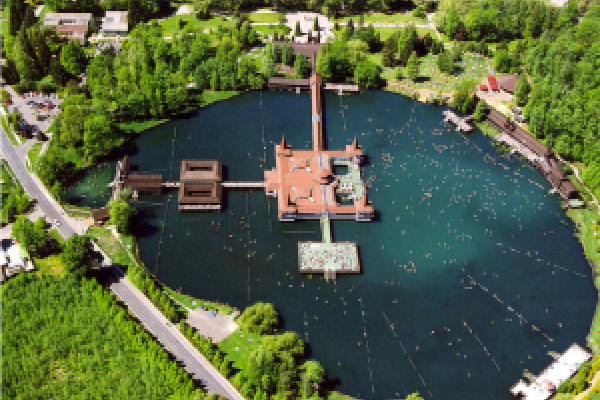
Learn Survival Hungarian
Wikitravel users have collectively created a free Hungarian phrasebook with the goal of making it possible for travelers to "get by" while traveling in areas where Hungarian is spoken.
Wikitravel phrasebooks are available in many languages and each one varies in depth and detail. Most of the phrasebooks include a pronunciation guide, a general phrase list, information about dates and numbers, a color list, transportation-related phrases, vocabulary for shopping and phrases for eating and drinking. Some are even more in depth, and all are free!
From Website
Hungarian (magyar nyelv) is a Uralic language, part of the Ugric group, related to Hungarian, Estonian and a number of minority languages spoken in the Baltic states and northern European Russia eastward into central Siberia. The Uralic languages are not related to the Indo-European languages that dominate Europe but have acquired loan words from them.
Hungarian is the most widely spoken non-Indo-European language in Europe. It is the official language in the Central European country of Hungary and is also spoken by Hungarian communities in the seven neighbouring countries and by diaspora communities worldwide. There are about 16 million native speakers, of whom 9.5–10 million live in present-day Hungary. About 2.5 million speakers live outside present-day Hungary, but in areas that were part of the Kingdom of Hungary before the Treaty of Trianon (1920). Of these, the largest group lives in Transylvania, the western half of present-day Romania, where there are approximately 1.4 million Hungarians. There are large, majority Hungarian territories also in Slovakia, Serbia and Ukraine, but Hungarian speakers can also be found in Croatia, Austria, and Slovenia, as well as about a million additional people scattered in other parts of the world. For example, there are more than one hundred thousand Hungarian speakers in the Hungarian American community in the United States.
The Hungarian name for the language is magyar [ˈmɒɟɒr], which is also occasionally used as an English word to refer to the Hungarian people from an ethnic point of view.
Hungarian is a non-Indo European linguistic island spoken in Central Europe found mainly in Hungary but also in parts of Austria, Slovakia, Romania, Ukraine, Slovenia, Croatia and Serbia. it is surrounded by Germanic, Romance and Slavic languages, and borrows heavily from them (the ö, the ü and the knack for combining two-words-in-one from German, the soft sign from Slavs), but none of which it is related to. Hungarian's distant relatives, both spoken in Europe, are Hungarian and Estonian. It shares with them the following properties:
- There is no grammatical gender.
- The first syllable is almost always stressed (also foreign words).
- Vowel and consonant length are distinctive; i.e., the meanings of words change when they are altered.
- Words are marked by case endings ("suffixes") which take on vowels similar to those in the words (e.g., a vonat Budára vagy Pestre közlekedik = the train goes to Buda or Pest). The importance of the similarity of vowels is a common aspect among languages which share a feature known as vowel harmony. The rules of vowel harmony are quite complex, but it basically consists of "front" vowels being placed with "front" vowels and "back" vowels placed with "back".
Remember, one difference in pronounciation or even vowel length can lead to misinterpretation!
The Hungarian alphabet is an extension of the Latin alphabet used for writing the Hungarian language.
One sometimes speaks of the smaller and greater Hungarian alphabet, depending on whether the letters Q, W, X, Y which can only be found in foreign words and traditional orthography of names are listed, or not. There are 44 letters in the (greater) Hungarian alphabet.
Hungarian has the following linguistic geneology: Uralic Languages > Ugric Languages > Hungarian